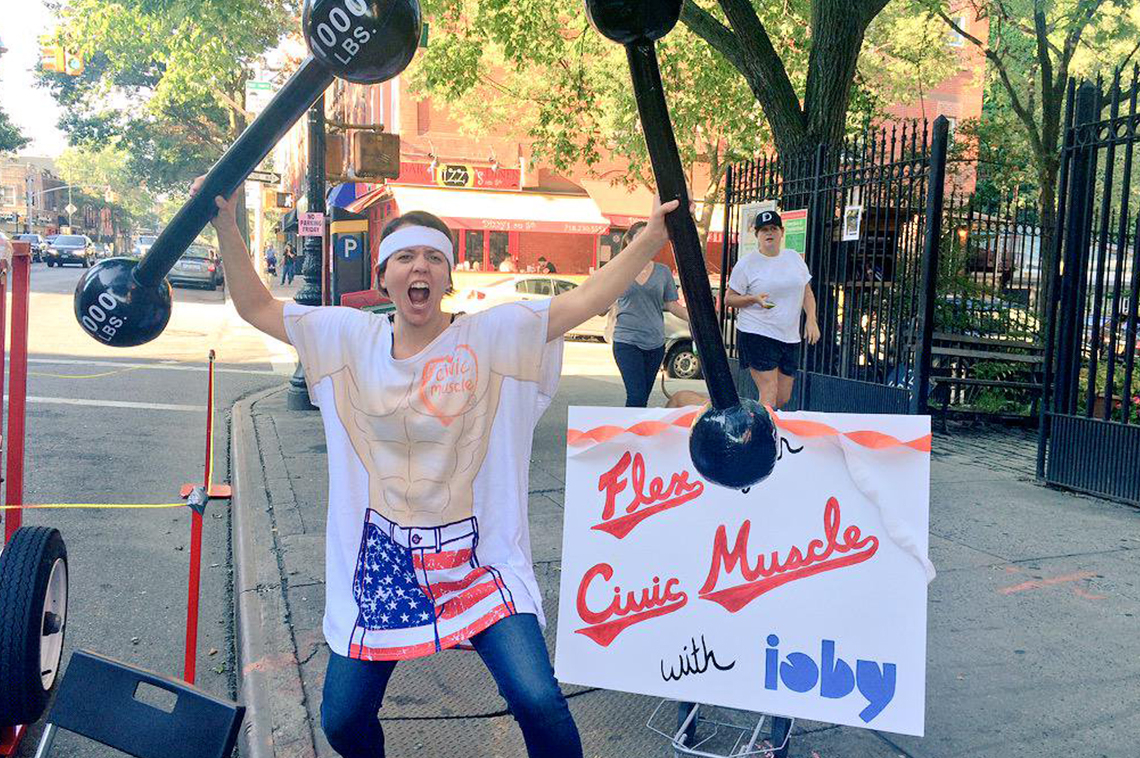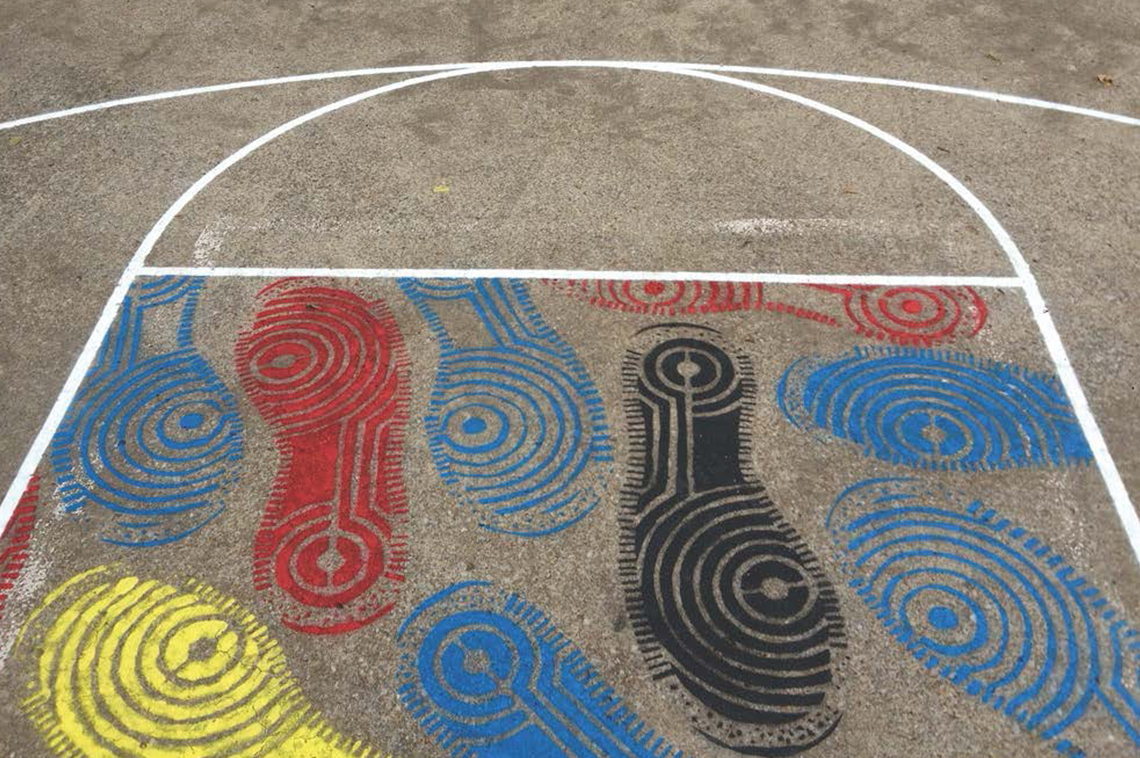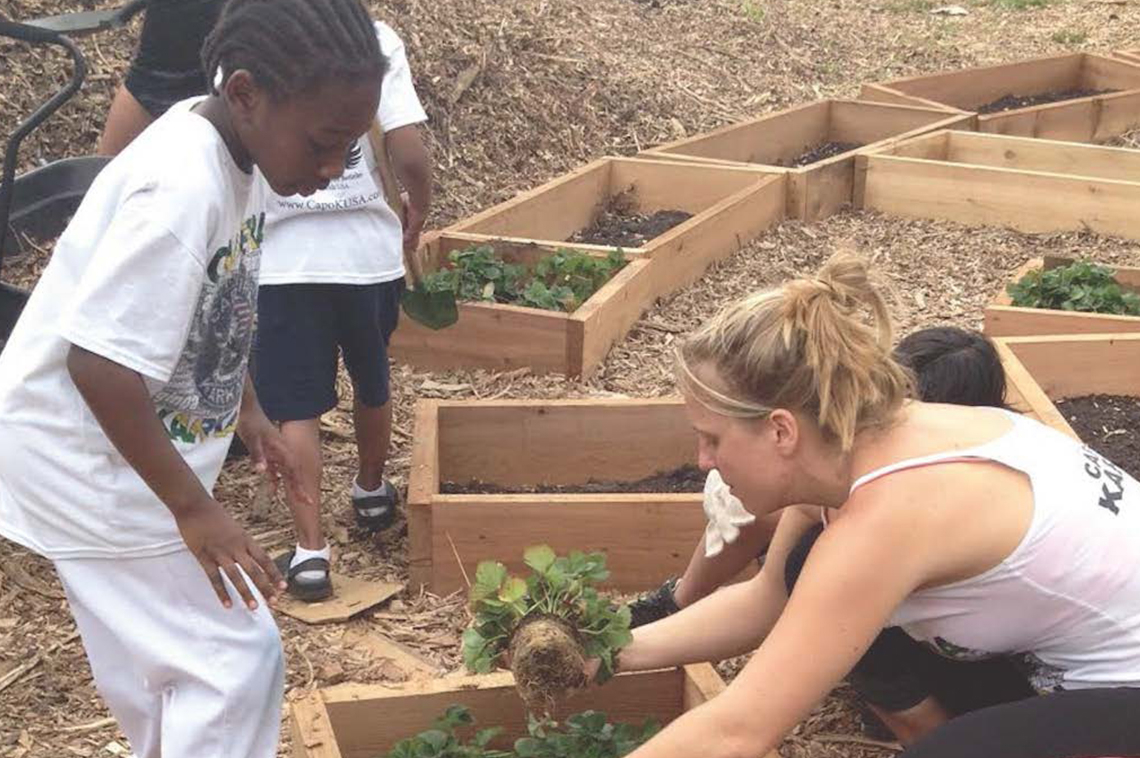


This session took place on May 22, 2018 at the ArtPlace 2018 Annual Summit in Louisville, Kentucky.
Who better to support your creative placemaking project than the community it will impact most?
In the session “Crowdfunding In Your Own Backyard,” ioby Leader Success Strategist Jennifer Allen framed crowdfunding as fundamentally more than a passing craze. In fact, she explained how the contemporary version of the classic “passing the plate” model helps grassroots initiatives (as well as established nonprofits) engage stakeholders, build capacity, and demonstrate public support—all while raising necessary capital.
ioby is a nonprofit community crowdfunding platform that helps local leaders raise and organize all kinds of capital—cash, social networks, in-kind donations, volunteers, and advocacy—to meet their needs.
She explained how ioby works with leaders on their campaigns from start to finish: every step of the way, the fundraising strategy and project plan remain resident-led, -designed, -funded, and -implemented. ioby’s one-on-one coaching supports a creative and personal campaign experience for each leader, and their flexible funding policy means deadlines and goals can change without penalties.
“In the short term, this approach produces real grassroots-level results,” Allen said. “Long term, it produces stronger civic infrastructure for lasting positive change.”
Allen laid out a number of other reasons crowdfunding is a smart way for many groups to fundraise. It provides...
- Renewable, unrestricted funding with no reporting requirements (unlike most grants)
- Helpful motivation to define specifics via deadlines, project goals, budget line items, etc.
- A way to build, diversify, strengthen, and/or invigorate your donor base
- A great opportunity for donor stewardship
- Inherent community engagement
- A vehicle for demonstrating public support
- A low-risk way to test projects and ideas on a pilot level
Allen then posed some True/False statements about crowdfunding to the audience:
1) A crowdfunding platform will fundraise for you.
False! While Allen stressed that ioby helps local leaders every step of the way with its coaching services and other resources, she also emphasized that “your project is your good idea, and it’s your awesome network that’s going to chip in and make it a reality.”
2) Social media doesn’t yield many donations.
True. “Viral campaigns are an anomaly,” Allen said. Most often, it’s acts of personal outreach—phone calls, coffee dates, letters, even just personal emails—that get the Benjamins flowing.
3) Crowdfunding campaigns annoy people.
False—mostly! While Allen acknowledged that donor fatigue is a thing, she explained that community crowdfunding campaigns are inherently place-based, and potential donors are usually happy to hear that someone is attempting to improve their neighborhood. She also pointed out that mounting a second or third campaign following a first win means you’re making progress, which people like to see. “Repeated successes reassure them that their donation is ‘safe,’” she said.
Allen presented these ioby campaigns as prime case studies:
The Ones Who Stayed: The Moore Family’s Legacy of Transforming Inner-City Indianapolis
Sew Much Love: A shelter-based creative employment program for homeless women living in North Memphis
And offered these best practices, many of which the case studies evidenced:
- Spend time on your storytelling. People love a good video! And they love a good photo almost as much.
- Keep your donors in the loop. Sending periodic updates on your progress lets them know how their money’s being spent and keeps donor morale up.
- Offer “concrete” things your donors can “touch.” Invite them to celebratory events, plan work days they can participate in, send them handwritten notes of appreciation with real printed photos.
- Involve youth. Getting children and young adults in on your project as participants, spokespeople, and volunteers sows the seeds of active community participation early. Plus, nothing sells an idea like a cute kid.
- Team members should play to their strengths. If someone in your fundraising cohort is great at social media but is super shy in person, don’t make them knock on doors. Everyone has something to offer; capitalize on those individual aptitudes instead of trying to make a square peg fit somewhere round.
- Share your personal story. Why did you start this campaign? What makes you care about the place or situation you’re trying to improve? We’re all drawn to specific, personal stories of purpose and passion.
- Break a larger goal into smaller campaigns. If you want ultimately want to turn every vacant lot in your town into a community garden, try starting with a single one. This approach is faster, easier, and will impart valuable lessons to you and your whole community about what to do—and what not to do—as you scale up.
Allen pointed the audience to ioby’s 7 Habits of the Highly Effective ioby Leader for more winning tips.
During the closing Q & A period, an audience member asked if he could really just start his community crowdfunding campaign by emailing ioby with his project idea. Allen said, “Yes!”
***
Additional resources:
- How they did it: Georgia’s Firefly Trail unlocks public funding through a grassroots campaign: Read how the nonprofit behind a beleaguered rail-trail used a crowdfunding campaign to demonstrate public support for their project and catapult it onto a local ballot—where it handily won millions in taxpayer funding.
- Learn from a Leader: This helpful blog and video series picks the brains of past ioby Leaders who have spearheaded creative, crowdsourced initiatives to make their neighborhoods better places to live, work, and play. A few ArtPlace favorites: Pilot a car-free weekend street closure, Turn a vacant lot into a multi-purpose community space, & Renovate a neighborhood basketball court.
- Recipes for Change: This guide taps experts in community organizing, advocacy, planning, and other fields nationwide for their advice about getting neighborhood-level projects off the ground. Some topics of particular relevance to creative placemakers: asset-based community development, engaging with local electeds and agencies, & getting buy-in for big, bold (or contentious) ideas.
- Webinars: From Crowdfunding for Racial Justice Projects to Crowdfunding for Larger Budgets to Crowdfunding for Walkable Communities, ioby’s webinars cover many aspects of fundraising for community projects.





